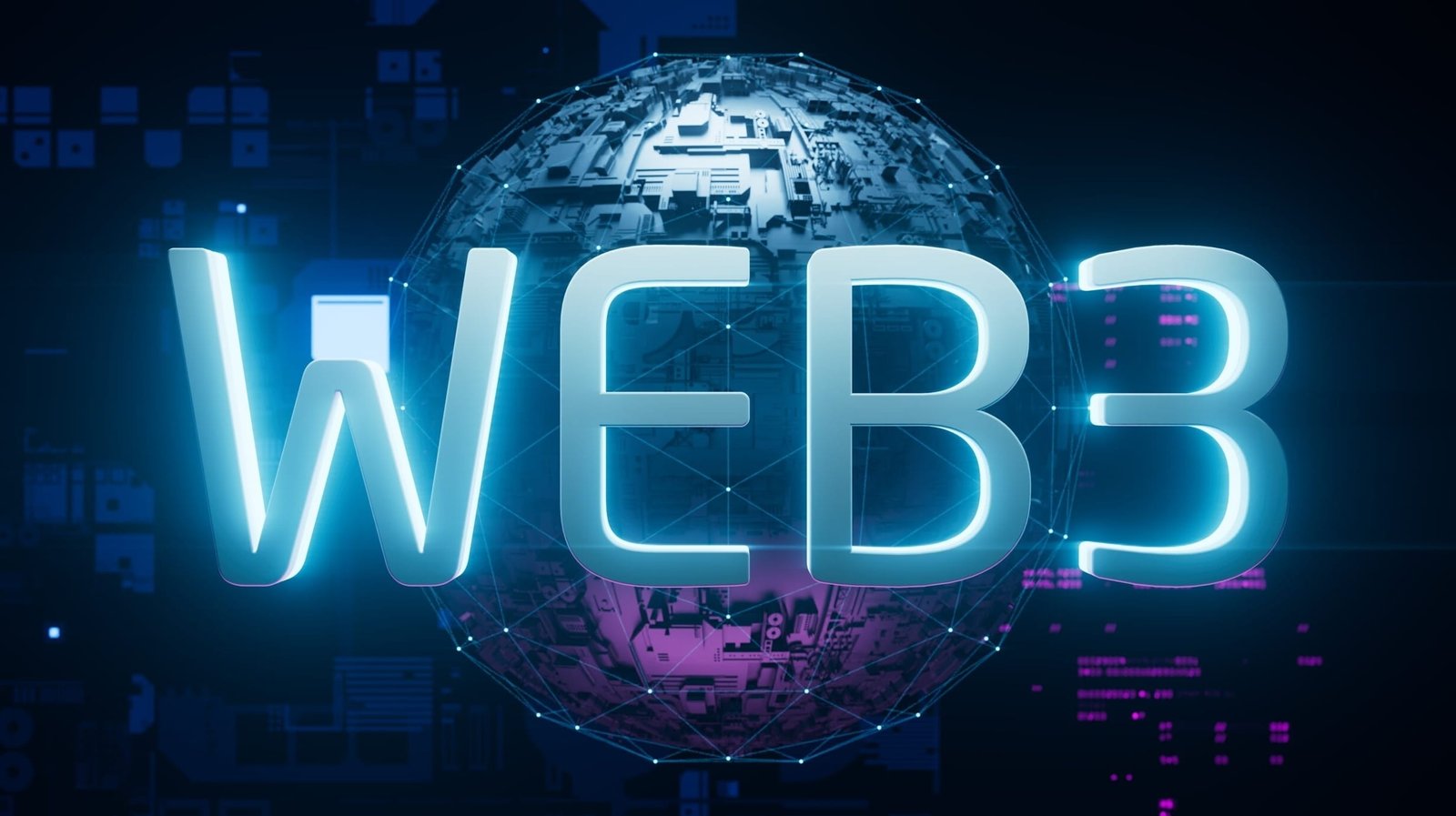
Web3 industry has demonstrated remarkable resilience and growth, with financing reaching an impressive $3.9 billion, establishing itself as the second-highest record in the sector’s history. This significant milestone signals a renewed confidence among investors and venture capitalists in the potential of decentralized technologies, blockchain innovation, and the broader digital asset ecosystem. Despite previous market turbulence and economic uncertainties that plagued the cryptocurrency space, the substantial capital influx into Web3 projects demonstrates that institutional and retail investors alike are betting heavily on the future of decentralized internet infrastructure.
This unprecedented level of funding comes at a pivotal moment when the blockchain industry is transitioning from experimental technology to mainstream adoption. The nearly $3.9 billion investment represents not just numerical growth but a fundamental shift in how traditional finance views decentralized systems. From decentralized finance protocols and non-fungible token platforms to metaverse projects and blockchain gaming ventures, the diversity of funded projects showcases the expanding scope of Web3 applications. Understanding the factors behind this financial surge, the sectors receiving the most attention, and the implications for the future of internet technology provides crucial insights into where the digital economy is heading.
The Remarkable Comeback of Web3 Investment
The journey to reaching nearly $3.9 billion in Web3 financing has been nothing short of extraordinary. Following the challenging market conditions of previous years, when cryptocurrency prices plummeted and several high-profile projects collapsed, many skeptics predicted a prolonged winter for the entire blockchain ecosystem. However, the resilience displayed by the decentralized technology sector has defied these pessimistic forecasts, with venture capital firms and institutional investors returning with renewed enthusiasm and larger investment portfolios.
This remarkable comeback can be attributed to several interconnected factors that have restored confidence in the Web3 space. First, regulatory clarity has improved in multiple jurisdictions, providing investors with a more predictable framework for blockchain ventures. Second, the technological infrastructure supporting decentralized applications has matured significantly, with improved scalability, enhanced security protocols, and better user experiences that make Web3 platforms more accessible to mainstream audiences. Third, successful case studies of blockchain implementation across various industries have demonstrated tangible value propositions beyond speculative trading.
The composition of this $3.9 billion investment reveals interesting patterns about investor priorities. While cryptocurrency exchanges and infrastructure projects continue to attract substantial funding, there’s been a noticeable shift toward practical applications that solve real-world problems. Decentralized identity solutions, supply chain management platforms, and blockchain-based payment systems are receiving increased attention from venture capitalists who recognize the potential for these technologies to disrupt traditional business models. This diversification of investment targets suggests a maturing industry moving beyond pure speculation toward sustainable business development.
Key Sectors Driving Web3 Investment Growth
The distribution of the nearly $3.9 billion in Web3 industry financing across various sectors provides valuable insights into where investors see the most promising opportunities. Decentralized finance continues to dominate as one of the primary recipients of venture capital, with protocols offering lending, borrowing, and yield generation services attracting hundreds of millions in funding. These DeFi platforms are revolutionizing traditional banking by eliminating intermediaries and providing financial services to underserved populations globally, making them particularly attractive to impact-focused investors.
Gaming and entertainment represent another significant category absorbing substantial portions of Web3 investment capital. The integration of blockchain technology with gaming has created entirely new economic models where players can truly own in-game assets and participate in game economies as stakeholders rather than mere consumers. Several blockchain gaming projects have secured funding rounds exceeding $100 million, indicating strong investor belief in the play-to-earn model and the convergence of gaming with decentralized finance. The success of early blockchain games has paved the way for more sophisticated projects that combine engaging gameplay with tokenized economies.
Infrastructure and developer tools constitute a critical category that’s receiving increased investment attention as the Web3 ecosystem expands. Recognizing that widespread adoption requires robust and user-friendly infrastructure, venture capitalists are funding projects that build blockchain development platforms, cross-chain interoperability solutions, and decentralized data storage networks. These foundational technologies are essential for supporting the next generation of decentralized applications and ensuring that the Web3 vision of a truly decentralized internet becomes a practical reality rather than remaining theoretical possibility.
The Role of Institutional Investors in Web3 Growth
The composition of investors contributing to the $3.9 billion Web3 financing milestone has evolved significantly compared to earlier funding cycles. While early blockchain ventures relied heavily on cryptocurrency-native funds and individual angel investors, the current landscape includes participation from traditional venture capital firms, hedge funds, and even corporate venture arms of established technology companies. This institutional involvement brings not only capital but also strategic guidance, industry connections, and operational expertise that can accelerate project development and market penetration.
Major institutional players entering the blockchain space have conducted extensive due diligence and developed sophisticated frameworks for evaluating Web3 investments. Unlike the speculative frenzy that characterized previous market peaks, current institutional investors are focusing on fundamental metrics such as user growth, revenue generation, technological differentiation, and team capabilities. This more disciplined approach to investment evaluation has helped filter out opportunistic projects while channeling resources toward ventures with genuine long-term potential, contributing to the overall health and sustainability of the Web3 ecosystem.
The presence of institutional capital has also influenced how Web3 projects structure their funding rounds and governance mechanisms. Many contemporary blockchain ventures are adopting hybrid models that combine traditional equity investment with token allocations, providing investors with multiple pathways to returns while maintaining alignment with the decentralized ethos of Web3. This evolution in funding structures reflects the industry’s maturation and its increasing integration with conventional financial markets, even as it maintains its revolutionary vision of decentralizing internet infrastructure and digital ownership.
Geographic Distribution and Regulatory Considerations
The nearly $3.9 billion in Web3 industry financing has flowed to projects across diverse geographic regions, though certain jurisdictions have emerged as particularly attractive destinations for blockchain ventures. Countries and regions with clear regulatory frameworks for digital assets and blockchain technology have naturally attracted disproportionate shares of investment capital. Singapore, Switzerland, the United Arab Emirates, and certain jurisdictions within the United States have positioned themselves as Web3-friendly environments by establishing regulatory clarity and providing supportive infrastructure for blockchain innovation.
Regulatory developments have played a crucial role in shaping investor confidence and determining capital allocation patterns within the cryptocurrency sector. Regions that have taken proactive approaches to creating balanced regulatory frameworks that protect consumers while fostering innovation have seen increased investment activity. Conversely, jurisdictions with uncertain or hostile regulatory stances have experienced capital flight as projects relocate to more welcoming environments. This regulatory arbitrage has become a defining characteristic of the global Web3 landscape and will likely continue influencing investment flows as different countries compete to attract blockchain ventures.
The relationship between regulation and Web3 financing extends beyond simple capital attraction to encompass fundamental questions about the future structure of the decentralized internet. Investors are increasingly evaluating projects not just on technological merit but on their regulatory compliance strategies and their ability to navigate evolving legal landscapes. Projects that proactively engage with regulators, implement robust compliance frameworks, and demonstrate commitment to responsible innovation are receiving premium valuations and preferential access to institutional capital, reflecting the industry’s recognition that sustainable growth requires working within rather than against regulatory structures.
Technological Innovations Attracting Investment
The technological advancements underlying many of the projects receiving portions of the $3.9 billion Web3 investment represent significant departures from earlier blockchain implementations. Layer-2 scaling solutions that dramatically reduce transaction costs and increase throughput have attracted substantial funding as they address one of the primary limitations preventing mainstream blockchain adoption. These technologies enable decentralized applications to achieve transaction speeds and costs comparable to traditional centralized platforms while maintaining the security and decentralization benefits of blockchain infrastructure.
Zero-knowledge proof technology represents another frontier attracting significant venture capital attention within the Web3 space. These cryptographic techniques enable privacy-preserving transactions and computations, addressing concerns about the transparency of public blockchains while maintaining their trustless security properties. Projects implementing zero-knowledge solutions for payments, identity verification, and data privacy are receiving enthusiastic investor support as they unlock new use cases that were previously impossible or impractical on transparent blockchain networks.
Interoperability protocols designed to connect disparate blockchain networks are also capturing substantial portions of Web3 investment capital. Recognizing that the future likely involves multiple specialized blockchains rather than a single dominant network, investors are funding cross-chain bridges, communication protocols, and unified application layers that enable seamless interaction across different blockchain platforms. These infrastructure projects are critical for realizing the vision of a truly interconnected Web3 ecosystem where users can move assets and data freely across networks without encountering the fragmentation that currently characterizes the blockchain landscape.
Market Implications and Future Outlook
The achievement of nearly $3.9 billion in Web3 industry financing carries significant implications for the broader digital economy and suggests several trends likely to shape the sector’s trajectory. First, this substantial capital influx will accelerate product development cycles and bring more polished, user-friendly applications to market faster than would otherwise be possible. As projects backed by this funding mature and launch, we should expect to see a new generation of decentralized platforms that rival centralized alternatives in usability while offering superior ownership and control to users.
Second, the competitive landscape within Web3 is intensifying as well-funded projects vie for user attention and market share. This competition will likely drive innovation and force projects to differentiate through superior technology, better user experiences, or unique value propositions rather than simply being early entrants in nascent markets. The consolidation typical of maturing industries may begin appearing in Web3, with successful projects acquiring smaller competitors or absorbing their technologies and teams to strengthen market positions.
Looking forward, whether the Web3 sector can sustain or exceed this $3.9 billion funding level depends on several factors, including macroeconomic conditions, regulatory developments, technological breakthroughs, and mainstream adoption rates. The fact that this represents the second-highest financing record suggests the industry has established a new baseline for investor interest that’s likely to persist even through market fluctuations. However, converting this capital into functioning products that attract millions of users remains the ultimate test of whether current investment levels are justified by genuine value creation.
Conclusion
The Web3 industry’s achievement of nearly $3.9 billion in financing, establishing the second-highest record in its history, represents a watershed moment for decentralized technologies and blockchain innovation. This substantial capital influx reflects restored investor confidence following challenging market conditions and demonstrates widespread recognition that Web3 technologies will fundamentally reshape internet infrastructure, digital ownership, and online interactions. The diversity of funded projects spanning decentralized finance, gaming, infrastructure, and practical applications indicates a maturing ecosystem moving beyond speculation toward sustainable value creation.
The involvement of institutional investors, improved regulatory clarity in key jurisdictions, and significant technological advancements have all contributed to creating conditions favorable for this investment surge. As projects backed by these billions of dollars in funding develop and launch their products, the Web3 landscape will likely transform dramatically, potentially bringing decentralized alternatives to mainstream audiences and challenging the dominance of centralized platforms. While uncertainties remain regarding regulatory evolution and mainstream adoption timelines, the nearly $3.9 billion financing milestone establishes a strong foundation for the continued growth and development of the decentralized internet.
The journey ahead for Web3 will require converting this financial support into tangible products that deliver superior experiences and value to users beyond the cryptocurrency-native community. Success in this endeavor will determine whether current investment levels represent a sustainable new normal or an unsustainable peak. Regardless, the achievement of the second-highest financing record in Web3 history marks this period as one of significant optimism and ambitious building within the blockchain ecosystem.
FAQs
Q1: What factors contributed to Web3 financing reaching nearly $3.9 billion?
The surge to $3.9 billion in Web3 financing resulted from multiple converging factors, including improved regulatory clarity in major jurisdictions, technological maturation of blockchain infrastructure, successful case studies demonstrating real-world value, and the return of institutional investors with substantial capital.
Q2: How does the $3.9 billion compare to previous Web3 funding records?
The nearly $3.9 billion represents the second-highest financing level in Web3 history, indicating substantial investor confidence despite previous market downturns. While it falls short of the all-time peak achieved during the previous market cycle, this funding level demonstrates that interest in blockchain and decentralized technologies has stabilized at historically elevated levels.
Q3: Which Web3 sectors received the most investment from this funding?
Decentralized finance protocols, blockchain gaming and entertainment platforms, and infrastructure projects received the largest shares of Web3 investment capital. DeFi platforms continue attracting substantial funding due to their potential to revolutionize traditional banking services.
Q4: What role do institutional investors play in current Web3 financing?
Institutional investors, including traditional venture capital firms, hedge funds, and corporate venture arms, have become major participants in Web3 financing, bringing not only capital but also strategic expertise and operational guidance. Their involvement has introduced more disciplined investment evaluation focused on fundamental metrics rather than speculative hype, contributing to the overall maturation of the blockchain ecosystem.
Q5: What does this financing milestone mean for the future of Web3 adoption?
The $3.9 billion financing milestone positions Web3 for accelerated development and potentially widespread mainstream adoption as well-funded projects build more polished, user-friendly applications. This substantial capital influx will likely result in a new generation of decentralized platforms that can compete effectively with centralized alternatives in terms of usability while offering superior user control and ownership.










